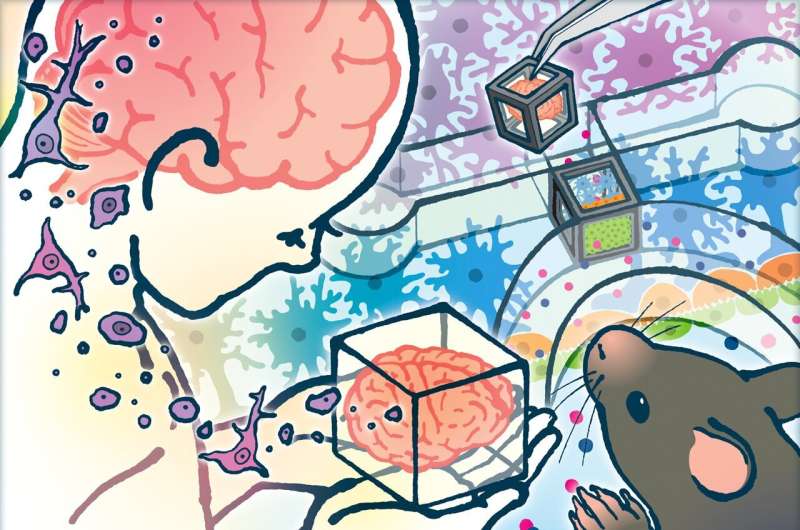This article has been reviewed according to Science X's editorial process and policies. Editors have highlighted the following attributes while ensuring the content's credibility:
fact-checked
peer-reviewed publication
trusted source
proofread
Researchers model blood-brain barrier using 'Tissue-in-a-CUBE' system

A research team at the RIKEN Center for Biosystems Dynamics Research (BDR) in Japan has succeeded in establishing a model of the blood-brain barrier using modularized tissue derived from human cells. The "Tissue-in-a-CUBE" is a small cubic structure that could provide a boost in the drug discovery field and be used as an alternative to animal models in pre-clinical studies.
The study is published in Communications Biology.
The blood-brain barrier is a strict gatekeeper around the brain that prevents foreign substances in blood from entering the brain. Although protective, the barrier poses challenges when treatments need to affect the brain in order to work. When developing drugs for treating brain diseases, it is thus crucial not only to test the drug's effectiveness inside the brain but also to confirm that the drug can pass through the barrier.
Developing new drugs is time-consuming and costly. At the early, pre-clinical stages, conventional methods rely on animal testing. However, differences between animals and humans sometimes make it difficult to predict a drug's effectiveness in humans as well as any harmful side effects.
Along with increases in the number of regulations governing animal experiments, these problems have encouraged researchers to develop research methods that do not rely on animal testing, such as using organoids—structures that mimic human organs—as well as organs-on-a-chip, with the ultimate aim to create artificial human organs for external use.
With this in mind, the research team led by Masaya Hagiwara at RIKEN BDR has developed a new model of the blood-brain barrier using the CUBE-type system that they recently established for modularizing different human tissues.
Reconstructing multiple tissues simultaneously and analyzing their interactions is extremely challenging because drugs have to traverse different types of tissues before reaching the target area, but also crucially important. In the case of the blood-brain barrier, drugs must pass through vascular endothelial cells, astrocytes, and pericytes before they can enter the brain.
To construct the blood-brain barrier model, the researchers created 5-mm CUBE frames, filled them with hydrogel embedded with astrocytes and pericytes derived from the human brain, and seeded vascular endothelial cells differentiated from human induced pluripotent stem (iPS) cells onto the surface to form cell sheets. They then tested the device. According to Hagiwara,
"We were happy to find that it accurately mimicked the real blood-brain barrier in terms of structure and function: with astrocytes and pericytes extending three-dimensionally beneath the sheet of endothelial cells, and that, like the real barrier, it only allowed limited substances to pass through."
One important feature of the CUBE frame is that it can be easily manipulated with forceps, allowing convenient handling of the blood-brain barrier model, with cell culturing being performed in a regular cell-culture plate. After maturation, the tissue was integrated with other prepared tissues in a fluidic chip to analyze inter-tissue interactions, thus fitting into the previously established modular Tissue-in-a-CUBE platform.
The group conducted drug screening experiments to demonstrate the system's usefulness for drug development. Brain tumor cells were cultured in the CUBE container to prepare a brain tumor module. The blood-brain barrier and brain tumor modules were then transferred into a fluidic chip and connected. This setup allowed researchers to verify how much of an anticancer drug could pass through the barrier, reach the brain tumor, and exert its effect.
"This innovative approach offers a promising alternative to animal testing for essential drug development tests, involving the understanding of drug behavior, effectiveness, and safety," says Hagiwara. "Our modularized platform could be adapted for various diseases, including age-related neurodegenerative diseases such as Alzheimer's and Parkinson's diseases. In the future we plan to modularize and replicate connections between different organoids."
More information: Masaya Hagiwara et al, Modular Tissue-in-a-CUBE platform to model blood-brain barrier (BBB) and brain interaction, Communications Biology (2024). DOI: 10.1038/s42003-024-05857-8


















